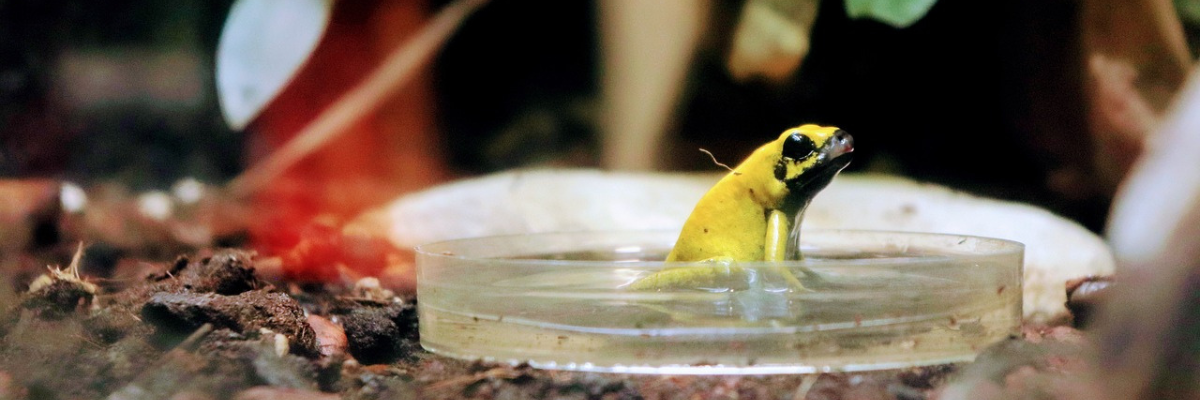FST BLOG
How Animals With Human Brain Cells Could Help Treat Diseases
- 7 September 2023
- Environment, Technology
- Emily Newton

What Happens in Chimeric Research?
Scientists have long been fascinated by the idea of mixing the cells of two organisms from different species. The Chimera is a mythical creature with various animal parts — the head of a lion, the body of a goat and a serpent's tail — that paints a terrifying picture for most people. For scientists invested in chimeric research, it’s nothing more than a fictional creature that inspires further study.
Chimera research is the study of organisms containing cells from different species. Scientific researchers worldwide have been studying its applications to understand diseases, early human development, aging and the development of therapeutic treatments.
Researchers who see the merit of studying a human-animal chimera reiterate its significance in advancing biomedical research and other scientific areas. At the same time, other scientists express their concern about the study, and the profound ethical and moral problems that come with it.
Human Stem Cells in Animals
The advancements in stem cell research in the 2000s opened new avenues for multispecies organism research. A team of researchers at Kyoto University created pluripotent stem cells from human cells from blood and skin. These pluripotent stem cells can transform into any kind of cell or tissue in the human body, making them a viable option for growing organs.
Researchers have developed a way to introduce these human stem cells — which can treat ailments from diabetes to strokes — into animal embryos in hopes of studying diseases and farming organs for human transplantation. This is one of the promising aspects of chimeric research that could be a lifesaving discovery if successfully proven.
Mouse-Human Embryos and Degenerative Diseases
Chimeric research is showing promising results in understanding diseases. Stem cell researcher Jian Feng is developing another technique to grow human cells in mouse embryos to understand the nature of neurodegenerative disease further.
Feng used human pluripotent stem cells in mouse embryos and found improved growth when he inhibited the signaling protein mTOR. As a result, he found some of the mouse embryos had as many as 4% human cells present.
More recently, in 2022, Stanford University researchers transplanted an organoid made from human stem cells into the brain of a newborn rat. The rat brain accepted the human neurons and activated certain behaviors in the subject. With this approach, the researchers could observe the effects of the human cells on the rat’s behavior.
This chimeric research opened new avenues for understanding mental disorders and human brain development. Such experiments would have been otherwise invasive and extremely challenging.
According to Dr. Sergiu Paşca, the study gives researchers an unprecedented view into the development of brain disorders. The platform can also test new drugs and gene therapies for neuropsychiatric disorders. Dr. Paşca is the study's senior author and a professor of psychiatry and behavioral sciences at the Stanford School of Medicine.
Harvesting Organs for Human Transplantation
Biologist Mary Garry — along with her husband, transplant cardiologist Dan Garry — focuses on researching the use of pluripotent stem cells in growing human tissues inside pig bodies. The premise of their study is organs made from patient stem cells will be more likely accepted by the body instead of rejected.
Pigs are a viable option for these scientific studies as their physiologies are similar to humans in many ways. Regarding production scale, pigs are also a better option, as they produce bigger litters and can reach body weights up to 200 pounds.
Theoretically, harvesting stem cell-infused porcine organs are more viable. Still, the evolutionary distance between humans and pigs creates technical challenges for this type of chimeric research.
Various Challenges of Chimeric Research
While interesting and thought-provoking, the chimeric research’s path to a scientific breakthrough is riddled with technical and ethical challenges. Human-animal chimera study is extremely difficult, even with the best and brightest scientists collaborating to find the answers.
SALK professor Juan Carlos Izpisua Belmonte is one of the most prominent names in the field. His team has been making strides in unraveling the scientific possibilities of merging human cells with animal embryos. He claims that chimeric research could be instrumental in advancing biomedical research for the earliest and last stages of life.
The highly complex experiments require a high level of expertise and technology. Leading chimeric scientists have yet to find better approaches to integrate human and animal cells to produce the results they hope to achieve effectively
Apart from technical considerations, there are moral and ethical questions about chimeric research. How far can science go in this direction? Will there be a point where chimeras become too human? What happens when there are more human cells in the developing brain of a chimera?
These are just some of the ethical questions that challenge the practice of merging human cells with animals. At this point, chimera research is still far from producing human-animal organisms with fully-developed brains. The current limit to developing human embryos is 14 days. Any further than that, scientists risk breaking ethical boundaries.
Future of Chimeric Research
Finding a cure for diseases and solving the world’s inadequate organ supply is just the tip of the iceberg for chimeric research. On a surface level, the benefits seem to outweigh the risk, but it’s difficult to predict where this scientific pursuit is headed. Nevertheless, it’s good to have some scientific minds question its direction and feasibility for future use.
Emily Newton is a seasoned industrial writer who explores the impact of technology in the industrial sector. She has over six years of experience providing insights on manufacturing and supply chain automation.
